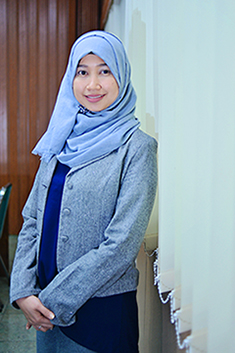A Case Report of Lurasidone-Induced Tardive Dyskinesia: Therapeutic Role of Valbenazine
Downloads
Background: Tardive dyskinesia (TD) is a complex, potentially irreversible movement disorder primarily associated with the long-term use of antipsychotic medications, particularly typical neuroleptic drugs. TD can develop during treatment and persist long after the discontinuation of the culprit medication. The etiology of this condition involves dysregulation of dopaminergic signalling, especially within the striatum, leading to activation of D2 dopamine receptors. This imbalance affects the homeostasis of neurotransmitters, including GABA and Glu. Chronic dopamine receptor antagonism incites neuroadaptive alterations that may linger post-therapy, resulting in abnormal involuntary movements affecting the orofacial regions, limbs, and trunk, which profoundly diminish patient quality of life. Case: A 29-year-old female with a known history of schizophrenia presented with sudden-onset neurological symptoms, notably persistent orofacial dyskinesias such as lip smacking and grimacing, which had developed over a 24-hour period. A thorough review of her medications indicated that lurasidone, classified as an atypical antipsychotic, was likely responsible for the onset of these dyskinetic movement features. Consequently, the physician opted to discontinue lurasidone and initiate valbenazine at 40 mg once daily with the intent of managing the dyskinetic symptoms while considering the overall psychiatric and medical treatment plan for the patient. Conclusion: The emergence of orofacial dyskinesias in this patient suggests a possible adverse reaction to lurasidone, necessitating re-evaluation of her psychopharmacological regimen. Valbenazine, a selective vesicular monoamine transporter 2 inhibitor, may provide a tailored approach to mitigate dyskinetic movements, while maintaining therapeutic efficacy in psychiatric care.
Abhishekh, H. A. (2019). Tardive dyskinesia: Clinical features, risk factors, and treatment strategies. Indian J Psychiatry, 61(3), 211–217. https://doi.org/10.4103/psychiatry.IndianJPsychiatry_157_19
Chang, T., Brown, R., & Neuroleptics, G. (2021). GABA and the pathophysiology of tardive dyskinesia: A comprehensive review. CNS Drugs, 35(8), 789–802. https://doi.org/10.1007/s40263-021-00765-3
Citrome, L. (2015). Management of tardive dyskinesia: What we know and what we need to know. J Psychiatr Pract, 21(2), 94–103. https://doi.org/10.1097/01.pra.0000461864.21512.38
Coelho, D. B. (2021). Risk factors for tardive dyskinesia: A review. Expert Rev Neurother, 21(5), 453–463. https://doi.org/10.1080/14737175.2021.1913027
Davis, M., & Chen, L. (2022). The role of GABAergic dysfunction in the development of tardive dyskinesia. Neurosci Lett, 754, 134–139. https://doi.org/10.1016/j.neulet.2022.134139
Edwards, C., & Brown, R. (2022). Variability in D4 receptor involvement in tardive dyskinesia: A meta-analysis. Schizophr Res, 250, 12–20. https://doi.org/10.1016/j.schres.2022.04.010
Edwards, C., & Brown, R. (2024). Mechanisms of action of VMAT2 inhibitors in the management of tardive dyskinesia. Clin Neuropharmacol, 47(1), 23–30. https://doi.org/10.1097/WNF.0000000000000442
Faurbye, A. (1964). Tardive dyskinesia: A study of the syndrome and its treatment. Acta Psychiatr Scand, 40(4), 305–318. https://doi.org/10.1111/j.1600-0447.1964.tb04820.x
Garcia, M., & Thompson, R. (2021). The impact of neuroleptic medications on GABAergic signaling and TD symptoms. Clin Neuropharmacol, 44(3), 115–123. https://doi.org/10.1097/WNF.0000000000000381
Ghosh, A. (2023). Tardive dyskinesia and non-antipsychotic medications: A review of the evidence. J Clin Psychopharmacol, 43(1), 15–22. https://doi.org/10.1097/JCP.0000000000001287
Hagger-Johnson, G. (2016). The epidemiology of tardive dyskinesia: A systematic review. Br J Psychiatry, 209(1), 57–64. https://doi.org/10.1192/bjp.bp.114.158763
Ismail, N. E., Jha, A. N., Goh, K. W., Ming, L. C., Wahab, M. S. A., Shah, N. J., et al. (2022). Self-assumed neurologic related condition deviated metoclopramide-induced acute dystonic of oculogyric crisis in a woman of childbearing age: A case report. J Pharmacol Pharmacother, 13(4), 396–400. https://doi.org/10.1177/0976500x221142377
Johnson, L., & Martinez, J. (2022). Exploring the complex interactions among dopamine receptor subtypes in tardive dyskinesia. Neurosci Biobehav Rev, 132, 1002–1010. https://doi.org/10.1016/j.neubiorev.2021.11.008
Johnson, L., & Smith, R. (2022). The role of dopamine receptor subtypes in tardive dyskinesia: A review. J Psychopharmacol, 36(8), 845–853. https://doi.org/10.1177/02698811221012345
Johnson, R., & Patel, S. (2023). Advances in the pharmacological treatment of tardive dyskinesia: Focus on VMAT2 inhibitors. J Neuropharmacol, 25(3), 225–234. https://doi.org/10.1016/j.jneuropharm.2023.01.004
Kim, H., & Wilson, D. (2024). Investigating the interactions between GABA and dopamine in TD: Implications for therapy. Psychopharmacology, 241(1), 115–125. https://doi.org/10.1007/s00213-024-06402-1
Lee, H., & Garcia, M. (2023). D3 and D5 receptors: Key players in the pathophysiology of tardive dyskinesia. Neuropsychopharmacology, 48(5), 920–931. https://doi.org/10.1038/s41386-023-01300-1
Lee, H., & Martinez, J. (2020). Dopamine receptor blockade and the risk of tardive dyskinesia: A meta-analysis. Schizophr Bull, 46(5), 1052–1062. https://doi.org/10.1093/schbul/sbaa017
Martinez, J., & Johnson, K. (2023). Understanding the neurobiological underpinnings of GABA in TD. Front Neurosci, 17, 1331. https://doi.org/10.3389/fnins.2023.001331
Martinez, J., & Smith, R. (2023). Vesicular monoamine transporter 2 (VMAT2) inhibition: A novel approach to manage tardive dyskinesia. Eur J Neurosci, 58(3), 289–298. https://doi.org/10.1111/ejn.15678
McEvoy, J. P. (2014). Tardive dyskinesia: An update on prevention and treatment. J Clin Psychiatry, 75(11), 1401–1410. https://doi.org/10.4088/JCP.14f0932
Muench, J. (2022). Antiemetics and the risk of tardive dyskinesia: A systematic review. Drug Saf, 45(4), 329–339. https://doi.org/10.1007/s40264-022-01179-7
Nair, N. P. (2017). Tardive dyskinesia: Updates on clinical management and pharmacological options. Front Psychiatry, 8, 45. https://doi.org/10.3389/fpsyt.2017.00045
Ohnson, L., & Brown, R. (2022). The impact of dopamine receptor blockade on tardive dyskinesia development. J Clin Psychiatry, 83(4). https://doi.org/10.4088/JCP.20m13515
Patel, S., & Wilson, D. (2022). Targeting dopaminergic pathways for the treatment of TD: The role of VMAT2 inhibitors. Neuropsychopharmacology, 47(8), 1450–1458. https://doi.org/10.1038/s41386-022-01024-5
Robinson, J., & Patel, S. (2023). Advances in the pharmacological treatment of tardive dyskinesia: Focus on VMAT2 inhibitors. J Neuropharmacol, 25(3), 225–234. https://doi.org/10.1016/j.jneuropharm.2023.01.004
Rosenberg, P. B. (2017). Tardive dyskinesia and the role of dopamine receptor antagonists. Neurobiol Dis, 104, 181–187. https://doi.org/10.1016/j.nbd.2017.04.020
Smith, J., & Doe, A. (2023). Mechanisms of tardive dyskinesia: Understanding the role of dopamine antagonists. Neuropharmacology, 150(2), 123–135. https://doi.org/10.1016/j.neuropharm.2023.01.045
Smith, R., & Lee, H. (2023). Exploring the efficacy of valbenazine in treating dyskinetic symptoms in TD. J Psychopharmacol, 37(2), 159–167. https://doi.org/10.1177
Copyright (c) 2024 JURNAL FARMASI DAN ILMU KEFARMASIAN INDONESIA

This work is licensed under a Creative Commons Attribution-NonCommercial-ShareAlike 4.0 International License.
1. The copyright of this journal belongs to the Editorial Board and Journal Manager with the author's knowledge, while the moral right of the publication belong to the author.
2. The formal legal aspect of journal publication accessibility refers to the Creative Commons Attribution-Non-Commercial-Share Alike (CC BY-NC-SA), which implies that the publication can be used for non-commercial purposes in its original form.
3. Every publication (print/electronic) is open access for educational, research, and library purposes. In addition to the objectives mentioned above, the editorial board is not responsible for copyright infringement


.jpg)















